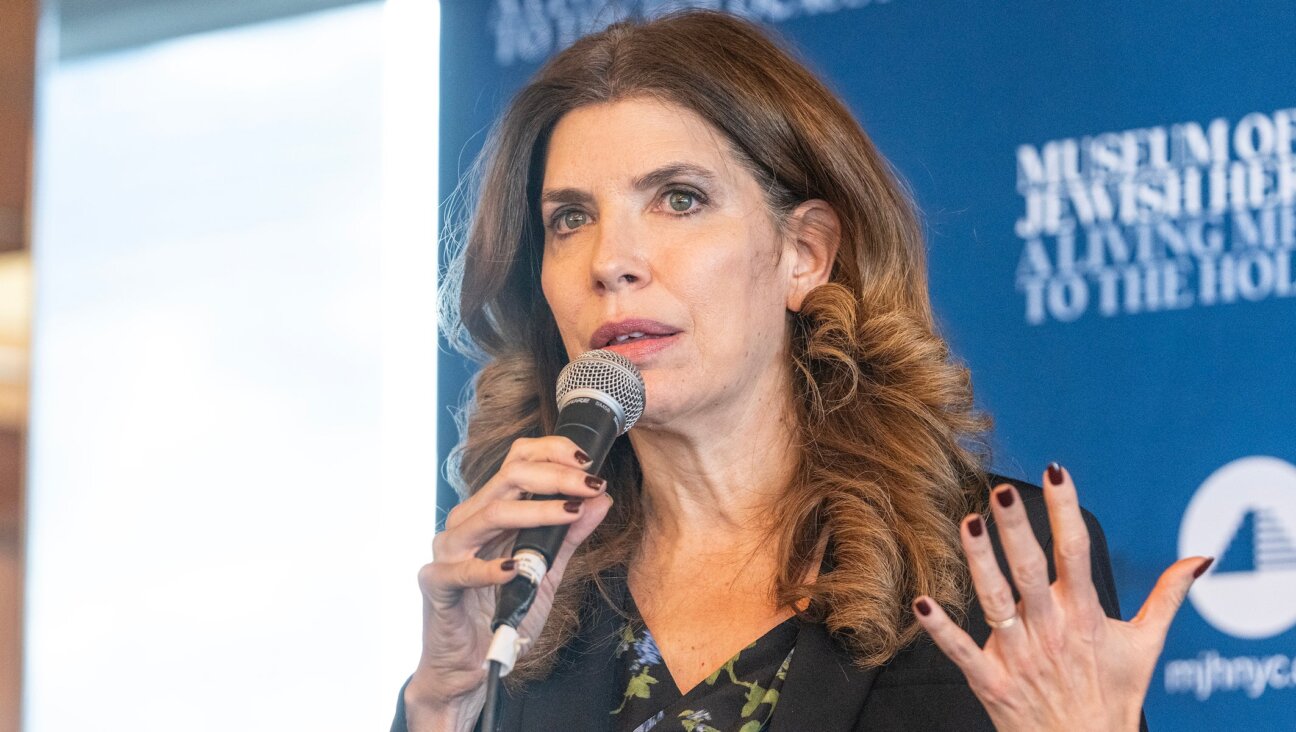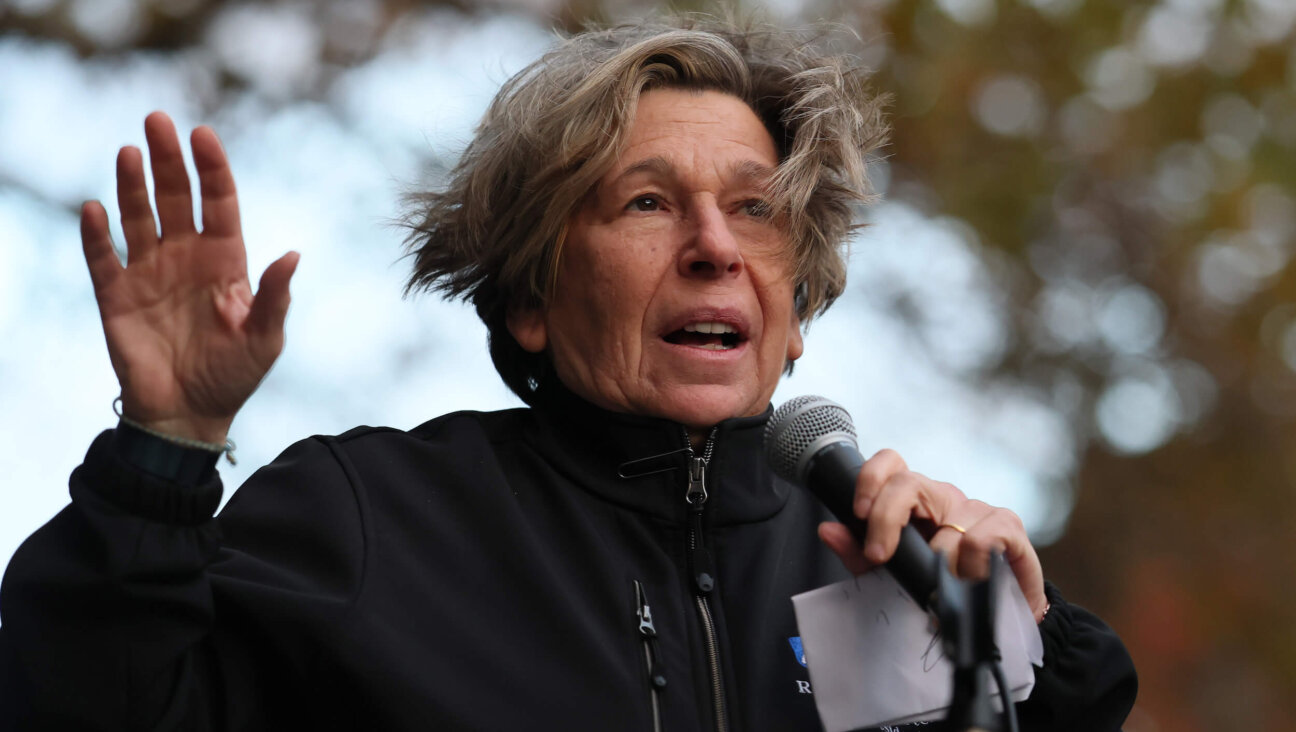Say It Loud: She’s Fat and She’s Proud
Two years ago, I did a column on what it was like to have a porkola meatball baby. Family members hissed that I nursed her too often; strangers squeezed her thighs and raised their eyebrows; one reader sent an impassioned letter pleading with me to stick a pacifier in the kid’s mouth, because if I kept stuffing her like a capon she’d get diabetes and die young. (And of course, other readers wrote in accusing me of being shallow for even thinking about this issue. You know how it is. Two Jews, three opinions.)
Back then, I wrote about how I was determined to raise a little girl with a healthy body image, whether she turned out fat or thin. Today, Josie is less spherical (she’s remained in the 95th percentile for height, but she’s dropped to the 80th for weight, so now she just looks like a second-grader in diapers), but I’ve only become more anxious. I just re-read “The Body Project,” a book about how girls today see the idea of self-improvement and moral behavior as being connected almost exclusively to their weight. I’ve recently seen a Journal of the American Medical Association study saying that being obese has as great an impact on children’s quality of life as having cancer. A recent New York magazine cover story talked about parents putting their preschoolers on low-carb diets, looking for Pilates classes for toddlers, and saying of their chubby children, “You could have a kid who has horrible behavior problems, but at least that’s not apparent on the Christmas card.” And when I talked to a friend with a small, brilliant, active 8-year-old daughter, and I worried aloud about how I’d handle Josie’s adolescent body traumas, my friend just laughed bitterly. “You think you have to wait for adolescence? Yesterday Sophie told me she can’t stand to look in the mirror in her dance class because she’s too fat.”
Kill me now. So I thank God for Wendy Shanker, author of the new book “The Fat Girl’s Guide to Life” (Bloomsbury, 2004). I met Wendy when we worked together on a horrid TV show on the Oxygen network. She was the host; I was a writer. The first time I saw her, big and curvy and gorgeous with a glossy Louise Brooks bob, perfect pale skin, deep red lipstick and glossy unchipped red nails (on me, red polish chips upon application, giving me a Courtney Love-like slovenly punkitude that’s not always what I’m going for), I was sure Wendy was going to be a mean Popular Girl. She was magnetic, charismatic and projected self-confidence. As it turned out, she was also hilarious, brilliant and incredibly supportive of other women. If you didn’t love her, you’d hate her.
As I write this, I realize I keep trying to avoid saying that Wendy is fat. As I keep erasing sentences and starting over, trying to express the notion that Wendy is simultaneously fat and sexy, I illustrate to myself that I haven’t internalized the point of her book.
“I want to take away the emotional associations of the word ‘fat,’” she told me in an interview. “It doesn’t mean lazy or depressed or unambitious. To me, it just means ‘not thin.’ It can and should also be positive — cherubic, joyful, full. Soft, sweet, smooth, grabby, delightful to touch. In the pursuit of being thin and muscular and toned, we forget the pleasures of fat. We forget moving a hand around a full thigh or breast. We poke it and go ‘oy’ and make a lot of ‘ch’ noises. Chchchchchch. But fat tastes good and feels good.” She continued, “Euphemisms are boring. Don’t say ‘voluptuous’ for fear of offending me. I didn’t call this book ‘The Lovely Bodacious Lady’s Guide to Life’ for a reason.”
“The Fat Girl’s Guide to Life” is both memoir and rant. It’s about Wendy’s misadventures in weight-loss-land, her path toward self-acceptance and her (often very funny) fury at size discrimination. She writes, “I’ve met with seven weight-loss specialists, worked with three nutritionists and three personal trainers, tried a dozen weight-loss programs, taken thousands of pills, joined six gyms, read 31 books, and spent enough money on weight loss to buy myself an Ivy League degree.” But today, she’s given up on getting skinny: “If we can’t take it off, then we might as well just take it on.” And she does. Among her targets: The Duke Diet and Fitness Center, where she stayed for a month and lost two pounds (that’s $4,715 a pound, if you’re keeping score at home), and learned that Duke considers that a success. Then there’s her reaction to a commercial for the Always Maximum Protection maxipad with Flexi-Wings, designed for women sized 14 and up. (This aria of outrage also appears on her Web site, wendyshanker.com.) At first she was pleased that someone was trying to meet her needs as a plus-size woman. Then it dawned on her: There’s no correlation between dress size and genitalia size. She writes, “I have enough problems without Procter & Gamble implying that I’ve got some sort of big, fat, crazy vagina down there that’s going to swallow you up if you get too close.” And then there was the time her Weight Watchers meeting was held up at gunpoint. She initially thought it was some kind of Scared Straight exercise to terrify clients into thinness.
But the book isn’t an extended stand-up routine. Wendy points out that being fat is okay, but being sedentary isn’t. She works out regularly, and points out studies showing that skinny, inactive people are likely to die earlier than people who are fit, including those who are fit and obese. (And no, that’s not a contradiction in terms.) Wendy talks about the impact of her mom’s death, when Wendy was only 10. (“No one checked to see what size skirt she was wearing in her coffin.”) And she talks about how fat girls need to embrace the word “fat” the way gays have embraced the word “queer.” As she said in our interview, “I’m coming out of the closet, and I’m wearing a really cute wardrobe! Just like the gay community, fat girls need to get over the bias we have against ourselves. Designers will make us clothes and Hollywood will make us movies if we’re loud enough. And the movie stars will be so happy to eat something!”
Though Wendy is single (cute Jewish boys: e-mail me! Wendy: please don’t kill me!) and kidless, she’s the perfect person to ask how to be a good body-positive mom to Jojo. Her advice: consistency. “I know you can’t tell your kids they’re beautiful and then look in the mirror and say, ‘uccch,’” she says. “You can’t tell them to eat three healthy meals, and then skip dinner yourself and eat chocolate chip cookies from the bag in the pantry. Kids are smart; they’ll pick up on your attitudes and behavior.” Finally, she essentially recommended teaching kids celebrity media literacy. “We’ve always been fascinated by celebrities, and celebrities from Helen of Troy to Rudolph Valentino have always set a standard of beauty that is above and beyond the masses,” she says. “But what we have now is a culture that is so permeated by celebrity worship, we’ve created a crazy standard for ourselves. Not only are they thinner than us, not only do their post-pregnancy tummies snap back like sheets in a military barracks, but we know every detail about how they lost weight and why and how and when and what products they used. So instead of a fantasy, these standards begin to seem very approachable. The new twist in the last couple of years is the trend of telling us how normal celebrities are. Mags show off photos of them picking up dog poop and washing their cars. So as the line between the famous and the normal becomes skinnier and skinnier, we want to be too.”
The upshot according to Wendy: “My parents always made me feel I had value outside of what I looked like. So develop your own body confidence. And feed your kids a healthy diet of self-esteem.” I’ll try. And if Jojo grows up to be anything like Wendy, I’ll know that l’ve succeeded.
Write to Marjorie at [email protected].














